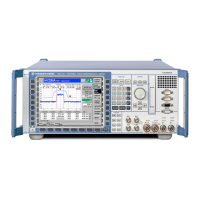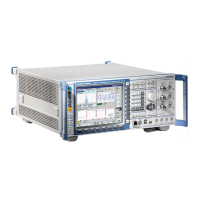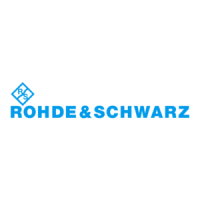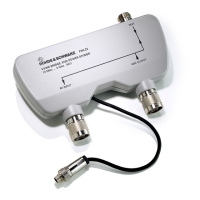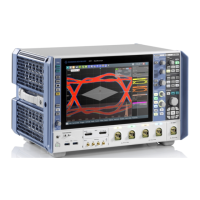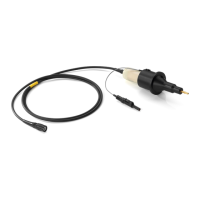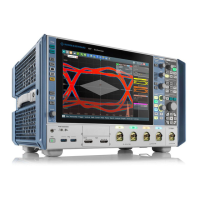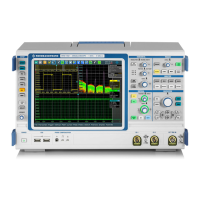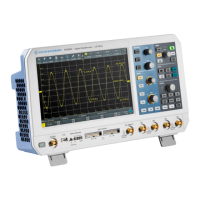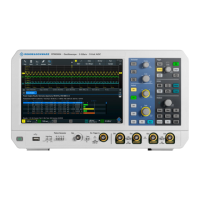Instrument Model and Command Processing CMU
1100.4903.12 5.14 E-8
Command Recognition
The command recognition analyses the data received from the input unit. It proceeds in the order in
which it receives the data. Only a DCL is serviced with priority, a GET (Group Execute Trigger), e.g., is
only executed after the commands received before. Each recognized command is immediately trans-
mitted to the data set but not executed immediately.
Syntactical errors in the command are recognized here and transferred to the status reporting system.
The rest of a command line after a syntax error is ignored.
If the command recognition recognizes a delimiter or a DCL, it requests the data set to set the com-
mands in the instrument hardware as well. Subsequently it is immediately prepared to process com-
mands again. This means for the command servicing that further commands can already be serviced
while the hardware is still being set ("overlapping execution").
Data Set and Instrument Hardware
The expression "instrument hardware" denotes the part of the instrument fulfilling the actual instrument
function - signal generation, measurement etc. The controller is not included.
The data set is a detailed software reproduction of the instrument hardware.
GPIB bus setting commands lead to an alteration in the data set. The data set management enters the
new values (e.g. frequency) into the data set, however, only passes them on to the hardware when
requested by the command recognition. As this is always only effected at the end of a command line,
the order of the setting commands in the command line is not relevant.
The data are only checked for their compatibility among each other and with the instrument hardware
immediately before they are transmitted to the instrument hardware. If the detection is made that execu-
tion is not possible, an "execution error" is signaled to the status reporting system. All alterations of the
data set are canceled, the instrument hardware is not reset. Due to the delayed checking and hardware
setting, however, impermissible instrument states can be set for a short period of time within one com-
mand line without this leading to an error message (example: simultaneous activation of FM and PM).
At the end of the command line, however, a permissible instrument state must have been reached
again.
Before passing on the data to the hardware, the settling bit in the STATus:OPERation register is set (cf.
section STATus:OPERation Register). The hardware executes the settings and resets the bit again as
soon as the new state has settled. This fact can be used to synchronize command servicing.
GPIB bus queries induce the data set management to send the desired data to the output unit.
Status Reporting System
The status reporting system collects information on the instrument state and makes it available to the
output unit on request. The exact structure and function are described in section Status Reporting Sys-
tem on page 5.16.
Output Unit
The output unit collects the information requested by the controller, which it receives from the data set
management. It processes it according to the SCPI rules and makes it available in the output buffer. If
the information requested is longer, it is made available "in portions" without this being recognized by
the controller.
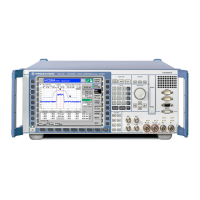
